May 30, 2023
Swinging into Summer
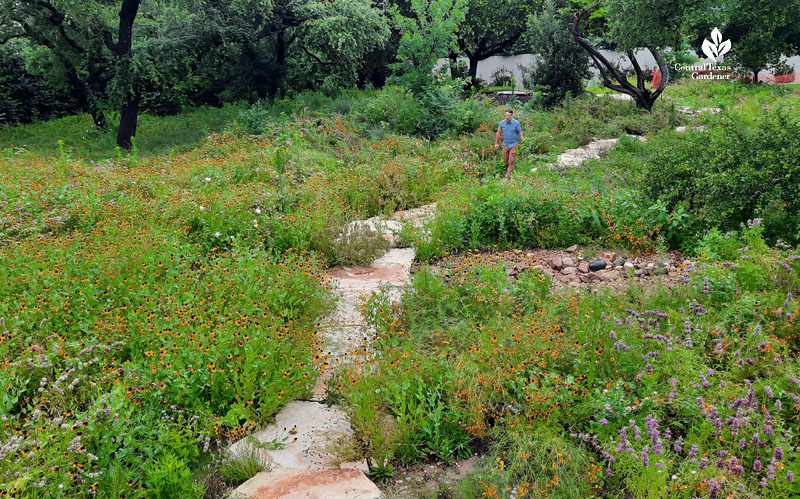
Whoa, where did May go? The days absolutely vanished as CTG hit the road! On one stop, we hooked up with John Hart Asher in Travis Heights where his Blackland Collaborative project danced into its first spring.
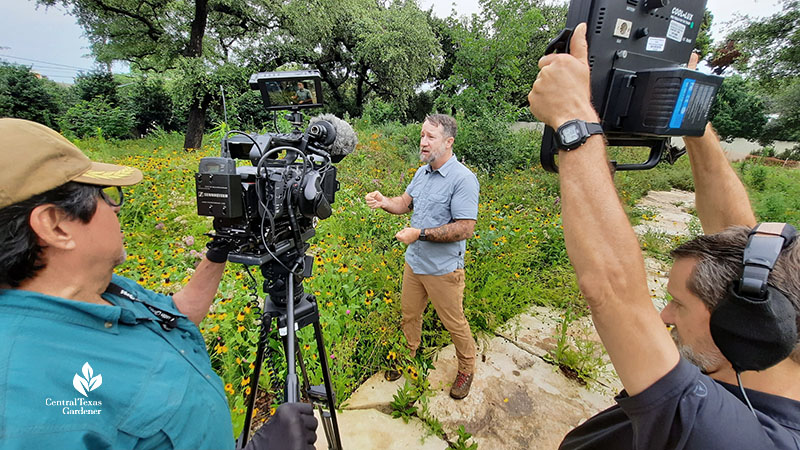
Clouds darted in and out as director Ed Fuentes and grip Steve Maedl and I trailed John Hart through the prairie, where grasses and wildflowers provide habitat for birds, pollinators, and other wildlife against a skyline where we counted 17 construction cranes.
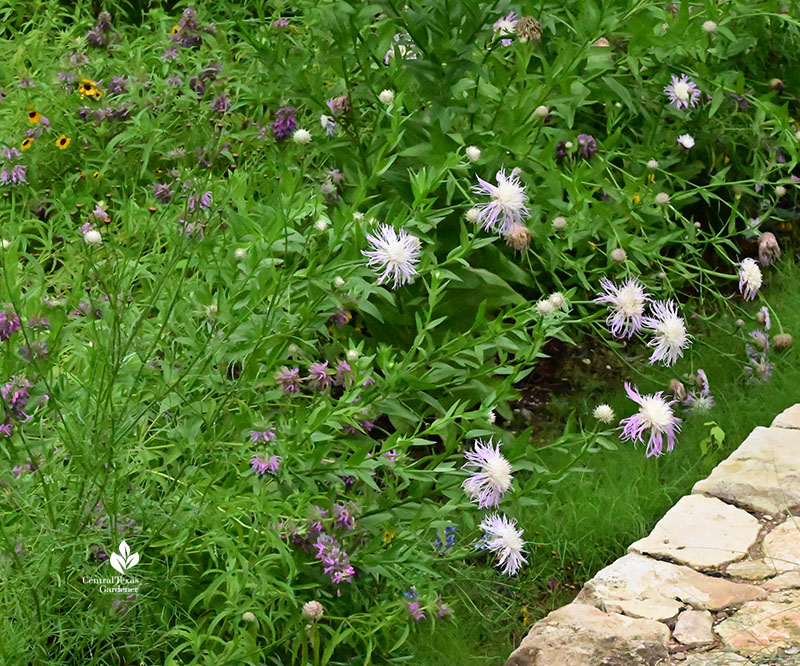
Early spring flowers are going to seed, so we basked in mid-to-late season treasures including dreamy daisy-like American basketflower and whorled-flower bee balm (Monarda citriodora), often called lemon mint or lemon horsemint. These annuals should reseed next year to modify the tapestry their own way!
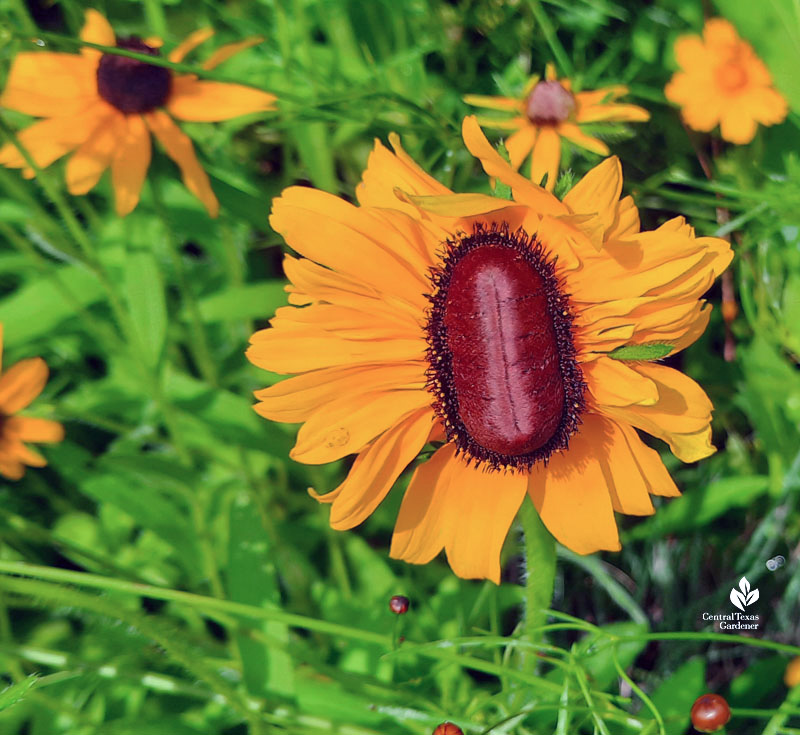
Annual clasping coneflower dominated some views on this day, but early-to-late summer lovers were elbowing in. This one’s elongated disk flowers resemble a velvet pincushion, a marvel called fasciation, an abnormal activity of a plant’s growing tip that can lead to this atypical shape.
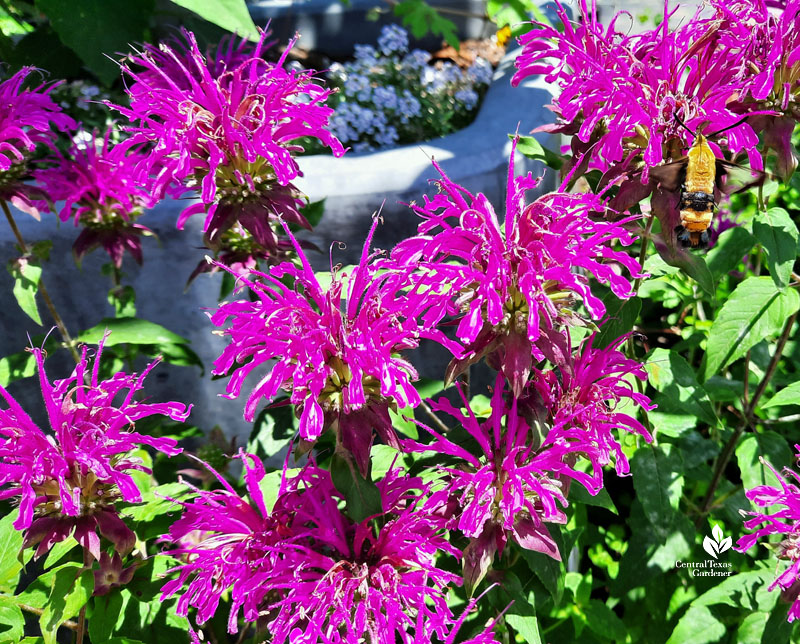
On the run, I spotted a hummingbird snowberry clearwing moth moving even faster on bee balm ‘Peter’s Purple’ rag mop flowers. This one’s a cross between native Monarda fistulosa and M. bartlettii, native to Mexico. Like all Monardas, it’s a hit with all kinds of bees and actual hummingbirds.
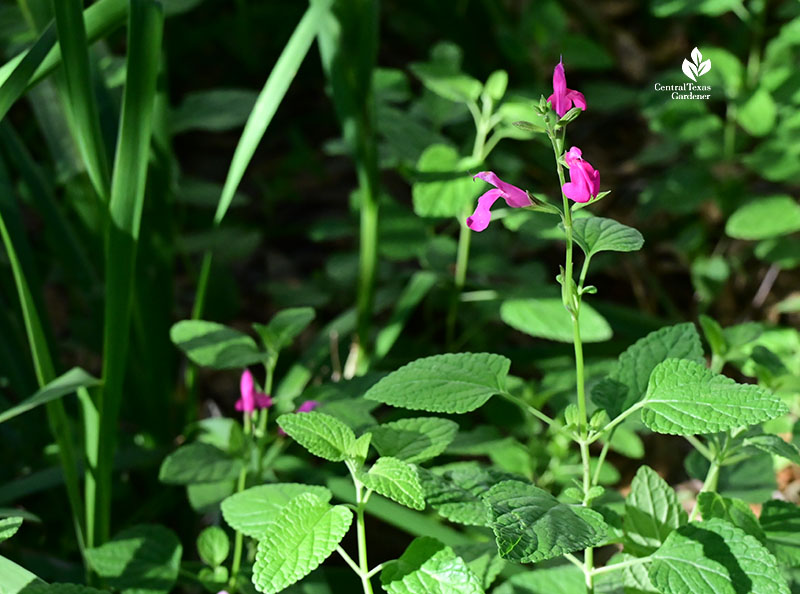
In a narrow strip along my house, Salvia microphylla ‘La Trinidad Pink’ joins ‘Peter’s Purple’ (among others) to entice hummingbirds and butterflies. One source credits Yucca Do nursery (now closed) for introducing it from Mexico. I’ve had this deciduous perennial since 2009, so it’s seen the best and worst of Texas weather. I’ve got three different varieties in varying sunlight: morning, afternoon, and a bit of both. I cut it back severely in late February when I do all the asters in this bed. It helps to tidy it up a bit in June to produce more flowers later.
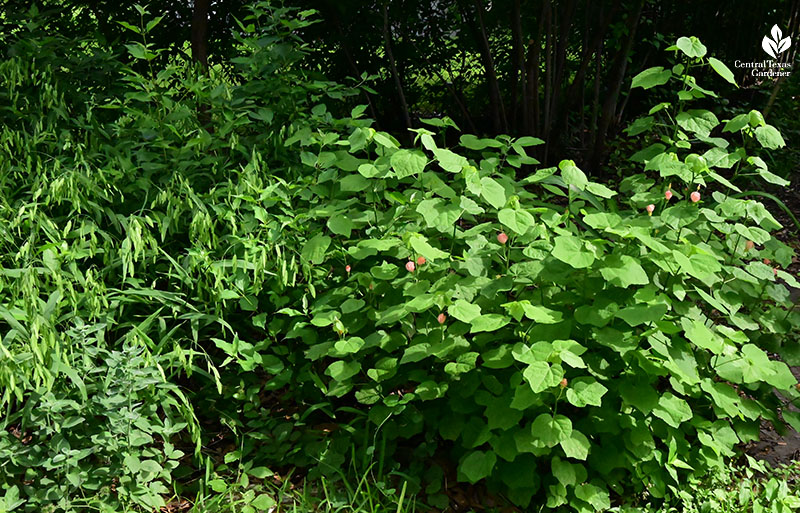
My garden’s been through so many droughts that it yawns and takes it in stride. But it’s gleeful when even a bit of rain comes tumbling down. ‘Pam’s Pink’ turk’s cap grew at least 2’ when my back was turned, and already, it’s pumping out happy meals for hummingbirds and butterflies. Silvery-leafed Dicliptera suberecta—commonly called Uruguayan firecracker plant—will soon entice the same crowd with fiery tubular blossoms. Inland sea oats is on overdrive in this woodland’s edge border along the fence.
New video next week! We head to New Braunfels where Kathleen Scott worked around HOA rules to create a native plant garden from scratch. See you then, Linda
tags:

